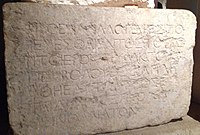
Charles-Jean-Melchior, Marquis de Vogüé was a French archaeologist, diplomat, and member of the Académie française in seat 18.

Jean Antoine Letronne was a French archaeologist.
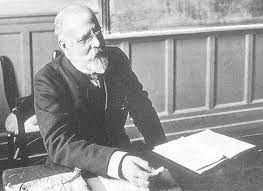
Charles Simon Clermont-Ganneau was a noted French Orientalist and archaeologist.

The Church of Saint George in the city of Lod is a Greek Orthodox church containing a sarcophagus venerated as the tomb of the fourth-century Christian martyr Saint George.
Al-Burj is a Palestinian village located twenty kilometers (12 mi) southwest of Hebron, in the Hebron Governorate of State of Palestine, in the southern West Bank. According to the Palestinian Central Bureau of Statistics, the village had a population of 3,205 in 2017. The primary health care facilities for the village are designated by the Ministry of Health as level 2. Al-Burj is the birth place of Tareq Talahma, Acting Director of the United Nations Office for the Coordination of Humanitarian Affairs.
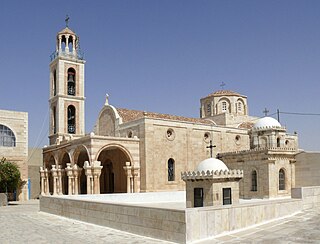
The Monastery of St. Theodosius, also known as Deir Dosi and Deir Ibn Ubeid in Arabic, is a monastery founded around 476 by Saint Theodosius the Cenobiarch and that since at least the 12th century contains his tomb. It is located within the village of al-Ubeidiya, some 8 kilometres east of Bethlehem, on the road towards Mar Saba Monastery, in the West Bank, Palestine.
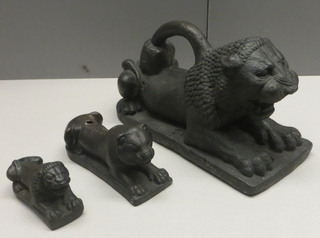
The Assyrian lion weights are a group of bronze statues of lions, discovered in archaeological excavations in or adjacent to ancient Assyria.

The Theodotos inscription is the earliest known inscription from a synagogue. It was found in December 1913 by Raymond Weill in Wadi Hilweh.
The Baal Lebanon inscription, known as KAI 31, is a Phoenician inscription found in Limassol, Cyprus in eight bronze fragments in the 1870s. At the time of their discovery, they were considered to be the second most important finds in Semitic palaeography after the Mesha stele.

The Corpus Inscriptionum Semiticarum is a collection of ancient inscriptions in Semitic languages produced since the end of 2nd millennium BC until the rise of Islam. It was published in Latin. In a note recovered after his death, Ernest Renan stated that: "Of all I have done, it is the Corpus I like the most."

The Yehawmilk stele, de Clercq stele, or Byblos stele, also known as KAI 10 and CIS I 1, is a Phoenician inscription from c.450 BC found in Byblos at the end of Ernest Renan's Mission de Phénicie. Yehawmilk, king of Byblos, dedicated the stele to the city’s protective goddess Ba'alat Gebal.

The Neirab steles are two 8th-century BC steles with Aramaic inscriptions found in 1891 in Al-Nayrab near Aleppo, Syria. They are currently in the Louvre. They were discovered in 1891 and acquired by Charles Simon Clermont-Ganneau for the Louvre on behalf of the Commission of the Corpus Inscriptionum Semiticarum. The steles are made of black basalt, and the inscriptions note that they were funerary steles. The inscriptions are known as KAI 225 and KAI 226.
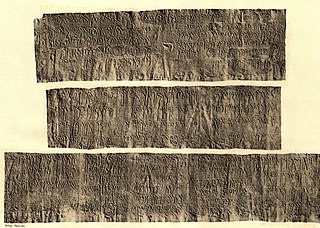
The Maktar and Mididi inscriptions are a number of Punic language inscriptions, found in the 1890s at Maktar and Mididi, Tunisia. A number of the most notable inscriptions have been collected in Kanaanäische und Aramäische Inschriften, and are known as are known as KAI 145-158.

The Abydos graffiti is Phoenician and Aramaic graffiti found on the walls of the Temple of Seti I at Abydos, Egypt. The inscriptions are known as KAI 49, CIS I 99-110 and RES 1302ff.

The Cirta steles are almost 1,000 Punic funerary and votive steles found in Cirta in a cemetery located on a hill immediately south of the Salah Bey Viaduct.

Shaqra, officially Chaqra and Doubay, is a local authority in southern Lebanon, 116 km from Beirut; located in the Bint Jbeil District. It consists of two parts: the village Chaqra; while Doubay, located about 4 km west of the village, is a castle dating at least to the Crusader era. Shaqra's inhabitants are called the Shaqrawis.
The Phoenician Adoration steles are a number of Phoenician and Punic steles depicting the adoration gesture (orans).
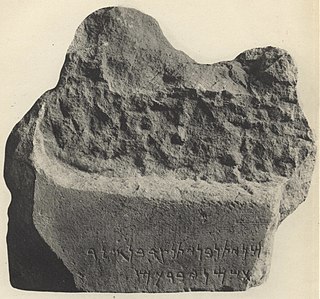
The Eshmun inscription is a Phoenician inscription on a fragment of grey-blue limestone found at the Temple of Eshmun in 1901. It is also known as RES 297. Some elements of the writing have been said to be similar to the Athenian Greek-Phoenician inscriptions. Today, it is held in the Museum of the Ancient Orient in Istanbul.

Hiram's Tomb is a large limestone sarcophagus and pedestal located approximately 6 km southeast of Tyre, Lebanon, near the village of Hanaouay on the road to Qana.

The Great Omari Mosque of Lod, also known as al-Omari Mosque or the Great Mosque of Lod, is a mosque in the city of Lod (Lydd), in Israel, which is located adjacent to the 19th-century Greek Orthodox Church of Saint George, allegedly erected over the tomb of the fourth-century martyr George of Lydda, who is frequently associated with the Muslim holy figure Al-Khadr.
